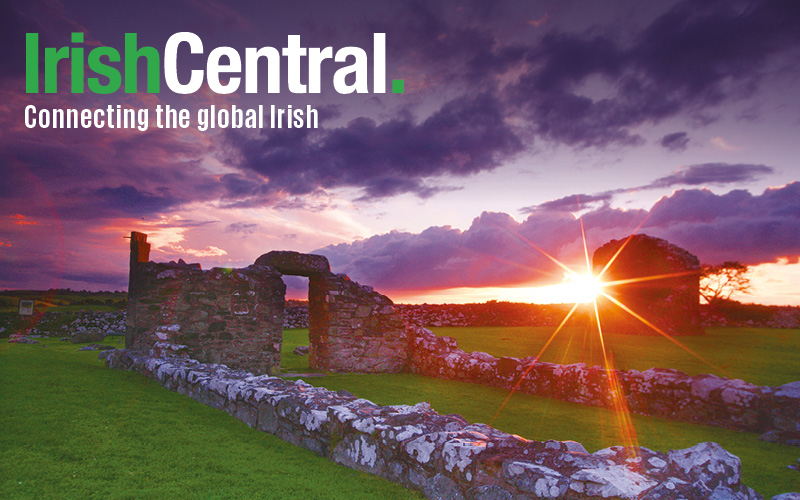A pilot project that has resulted in the development of a heritage trail along 40 miles of the Wild Atlantic Way (WAW) is being hailed as a template for future similar developments along the West of Ireland coastal route that runs from Donegal in the north to West Cork in the south.
Clare County Council, in partnership with Loop Head Tourism, The Heritage Council and Fáilte Ireland, today launched the Loop Head and Kilkee Heritage Trail on the Wild Atlantic Way.
The guide features 18 local heritage attractions including the West Clare Railway, the Church of the Little Ark, Kilkee Victorian Town and the Bridges of Ross, as well as other local WAW Discovery and Signature Points.
Through consultation with the local community and stakeholders, the pilot project also features recommendations to make it more streamlined and cost effective for other local communities to replicate the same project along the 1,500 mile WAW.
Cllr. John Crowe, Cathaoirleach (chairperson) of Clare County Council welcomed the selection of Kilkee and the Loop Head Peninsula as the location for the pilot project and said he hoped other WAW communities will be inspired to further enhance their tourism product offering.
He added, "The development and promotion of lesser known attractions is often overlooked even though they hold the key to revitalizing the domestic tourism sector. The Loop Head Peninsula boasts a variety of local heritage sites and attractions, along with some of Ireland’s most unique and breathtaking scenery. The development of this Trail complements work undertaken throughout the Loop Head Peninsula in recent years to develop and promote the local tourism product."
Congella McGuire, Heritage Officer with Clare County Council, said Loop Head’s growing reputation as a visitor destination has evolved as a result of “a bottom-up, community-focused approach."
"The project is aimed at promoting a greater sense of understanding of the history, heritage, folklore and culture along the Wild Atlantic Way (WAW) route by connecting with and placing the local community at the core of this and future WAW projects," she said.
McGuire noted that a systematic project methodology was used in the development of the heritage trail.
"The first key task was the identification of potential heritage trail sites by the project steering group and key community representatives. An inspection of each of the 27 potential heritage sites was undertaken where a set of site assessment criteria were applied and this potential list was refined. This was followed by research and interpretation tasks surrounding the 18 sites on the final list and the Maritime History, Folklore and Traditions, Flora and Fauna, and Built, Military and Religious Heritage of the area," she commented.
McGuire continued: "The recommendations, processes and checklists outlined in the final project report should allow the project to be replicated and help future projects be more efficient, streamlined and cost effective. They also provide a clear model for working with the local community and stakeholders and will help deliver high quality and consistent design-ready interpretation content along the entire WAW."
Cillian Murphy, Chairperson of Loop Head Tourism commented: "We are delighted to have had this opportunity to work with The Heritage Council, Fáilte Ireland and Clare County Council on developing the first destination-led heritage trail on the WAW. It is testament to the hard work done by the group over the last number of years that we were chosen to be the pilot project on how to showcase our local heritage to visitors, enticing them to slow down and spend a little longer in each destination along the Wild Atlantic Way."
"The resulting Loop Head Peninsula Heritage Trail is a shining example of what can be achieved when statutory agencies and local community groups co-operate in a bottom-up approach to tourism development. County Clare has placed itself at the forefront of responsible tourism development in Ireland over the last number of years and this project is further proof of that decision paying dividends and benefiting both locals and visitors alike," added Murphy.
The Loop Head and Kilkee Heritage Trail on the Wild Atlantic Way features Carrigaholt Castle and Bay, Bridges of Ross, Kilkee Cliffs and Pollock Holes (WAW Discovery Points), Church of the Little Ark (WAW Signature Point), Blackweir Bridge, Doonaha Ringforts, Tullig Famine Village, Corbally and Coosheen (Heritage Areas), Bishops Island, Dunlicka Castle, Loop Head, Pilots Memorial and Kilbaha Bay, Grave of the Yellow Men, Rinevella Bay and Submerged Forest, Kilcredaun Churches and Holy Well, Querrin Pier and the West Clare Railway (Heritage Sites).
The Trail Z-Card will shortly be made available throughout the region. For more visit www.loophead.ie and www.clare.ie.




Comments